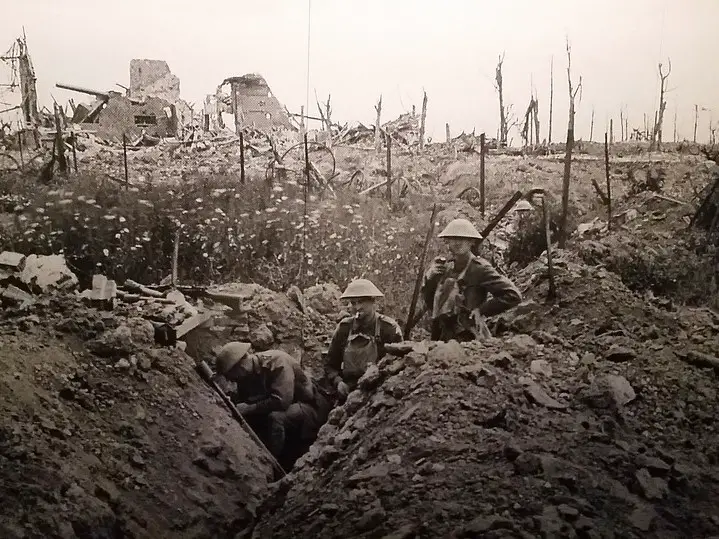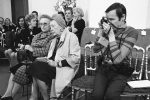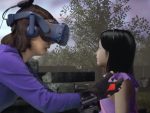The first world war was the most pivotal event in modern history. It was during this conflict that traditional views about the grandeur of war died in the eyes of both citizens and soldiers. The war established new borders across Europe, led to the dissolution of several monarchies, caused the Russian Civil War and set the stage for the European theater of World War II. Yet, it is a war constantly overshadowed by the later world war, a disservice “They Shall Not Grow Old” remedies.
Typically, only vague images of trenches and biplanes are associated with the war. Even when expanded into mediums such as video games, the memory of the war continues to slip by each generation. In 2018, renowned director Peter Jackson took the responsibility to revitalize the war’s memory in the public consciousness. With the documentary “They Shall Not Grow Old,” Jackson has allowed modern viewers an unprecedented look into the horrors and humanity of The Great War.
Jackson has deep investment in World War I. He grew up with stories of his grandfather, William Jackson, who fought in several major campaigns during the war. He has since taken to building replica WWI fighter planes and running two museums dedicated to the war.
In 2008 he directed the short film “Crossing the Line” alongside “District 9” director Neill Blomkamp, chronicling the experiences of a soldier and pilot. In 2014 the BBC and the Imperial War Museum collaborated to produce a film featuring the latter’s archive footage. Jackson, on account of his extensive experience and assets, was approached to helm the project.
Film from the early 20th century carries an uncanny quality for many people, putting a barrier between the events on film and the viewer. As Jackson put it, “I wanted to reach through the fog of time and pull these men into the modern world, so they can regain their humanity once more — rather than be seen only as Charlie Chaplin-type figures in the vintage archive film. ”
The archival footage he used from the British War Museum constitutes some of the earliest forms of film, the technology itself having only been about two and a half decades old. Damage and natural degradation over the last century only added to the alien motion in the film. To overcome this, Jackson brought the footage to his special effects company, Weta Productions.
The frame rate was the primary technical hurdle, as the footage’s rate of 18 frames a second can make the footage look jerky. Any movement in this context translates as mini jump cuts rather than fluid movement. In order to compensate, software was used to digitally fill in the gaps, bringing the overall footage to around 24 frames per second. In addition, the film was digitally enhanced and colorized.
Sound effects were another carefully crafted element. In order to bring the soldiers to life, lip readers were recruited to make out what was being said by any soldiers facing the camera. Voice actors then recorded the lines, and the dialogue was added in when appropriate, which, in addition to ambiance — the recreated sound of canons, soldiers marching, etc. — helps to fully complete the picture.
Footage from the war was not all the archive had to offer. Interviews with over 200 veterans were considered for the film. There is no overarching narrator to tie the pieces; instead the voices of those who lived in the trenches guide the viewer. They tell of desensitization to the horrors of war and illustrate their activities when not in combat. Events at home are described, such as the rise of the White Feather movement, a patriotic movement that involved extreme social pressure and harassment intended to push all British men into service. All the details, big and small, help the audience understand what their lives were like.
In addition, the film is structured to effectively touch the audience’s emotions. The documentary starts with original footage, accompanied by still images of propaganda posters, as the interviewees speak on their memories. That format carries on for about a third of the film, at which point the footage transitions into the restored archive versions. The documentary essentially goes from the idealized, stereotypical presentation of the war into the new, grounded image. In this way, it has an allegorical quality, inferring the recruits’ experience as they went from believing in the romanticized image presented by society to the reality of war.
Many of the scenes present the squalid conditions of the trenches and combat, but there are many others that show more mundane aspects of soldiers’ lives, such as moving equipment or engaging in leisure. In particular, the sequences that show lighthearted fraternization between the British soldiers and German prisoners show the moral ambiguity of war.
2018 marked the 100th anniversary of the end of World War I. In total, over 40 million people lost their lives from 1914 to 1918. Its effects have had long-lasting influence. After all, many countries rose and fell as a result. The countryside of France itself is still littered with impact craters in grassy fields. The first world war definitively marked the end of traditional warfare, as Napoleonic cavalry charges faced machine guns and found themselves replaced with tanks and planes.
While Europe still pays homage to the war, it is no longer alive in anyone’s memory. Royal Navy veteran Claude Choules housed the last direct memory of the war. With his passing in 2011, all that is left are the photos, films, interviews and relics. No one is left that saw it with their own eyes. Jackson recognized this source of disconnection, so when he was presented the opportunity to work on the “They Shall Not Grow Old” project, he did not simply make it into a compilation of footage with a disassociated narrator.
He took the time and pooled the resources to make it an experience, to live vicariously through the eyes of those who can no longer see.
















